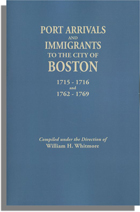
Is Your Genealogy Sustainable?
[av_three_fourth first min_height=” vertical_alignment=” space=” custom_margin=” margin=’0px’ row_boxshadow=” row_boxshadow_color=” row_boxshadow_width=’10’ link=” linktarget=” link_hover=” padding=’0px’ highlight=” highlight_size=” border=” border_color=” radius=’0px’ column_boxshadow=” column_boxshadow_color=” column_boxshadow_width=’10’ background=’bg_color’ background_color=” background_gradient_color1=” background_gradient_color2=” background_gradient_direction=’vertical’ src=” background_position=’top left’ background_repeat=’no-repeat’ animation=” mobile_breaking=” mobile_display=” av_uid=’av-hjmohy’]
[av_textblock size=” font_color=” color=” av-medium-font-size=” av-small-font-size=” av-mini-font-size=” av_uid=’av-fyis5i’ admin_preview_bg=”]
(The following article was reprinted from the Hank Jones’ Foreword to the book, Sustainable Genealogy: Separating Fact from Fiction in Family Legends, by Richard Hite)
Genealogists today are living in some interesting times. We have a wealth of new tools and toys to play with, making our research easier and quicker. With the internet accessible in every home and local library, family historians now can access sources that would have been difficult to locate before and network and compare notes with other genealogists around the world who are working on the same families.
[/av_textblock]
[/av_three_fourth]
[av_one_fourth min_height=” vertical_alignment=” space=” custom_margin=” margin=’0px’ row_boxshadow=” row_boxshadow_color=” row_boxshadow_width=’10’ link=” linktarget=” link_hover=” padding=’0px’ highlight=” highlight_size=” border=” border_color=” radius=’0px’ column_boxshadow=” column_boxshadow_color=” column_boxshadow_width=’10’ background=’bg_color’ background_color=” background_gradient_color1=” background_gradient_color2=” background_gradient_direction=’vertical’ src=” background_position=’top left’ background_repeat=’no-repeat’ animation=” mobile_breaking=” mobile_display=” av_uid=’av-dqt9om’]
[av_image src=’https://genealogical.com/wp-content/uploads/2018/09/2017-11-05-05-34-06.1f57953c24fd8041d68074e472523f5cb3720209-223×300.jpg’ attachment=’5382′ attachment_size=’medium’ align=’right’ styling=” hover=’av-hover-grow’ link=’manually,https://library.genealogical.com/printpurchase/ozld5′ target=’_blank’ caption=” font_size=” appearance=” overlay_opacity=’0.4′ overlay_color=’#000000′ overlay_text_color=’#ffffff’ copyright=” animation=’no-animation’ av-mini-hide=’aviaTBav-mini-hide’ av_uid=’av-ctl2eu’ admin_preview_bg=”][/av_image]
[/av_one_fourth]
[av_textblock size=” font_color=” color=” av-medium-font-size=” av-small-font-size=” av-mini-font-size=” av_uid=’av-b2847q’ admin_preview_bg=”]
But besides being a blessing, the internet is also a curse: shoddy research abounds, undocumented family connectives are widespread, and spurious sources often outnumber the legitimate ones. Unproven family traditions often are accepted unconditionally as fact and then, worst of all, venture down the internet highway, eventually making them seem like gospel rather than the garbage they really are.
Many of the genealogical sources used today derive from the oral histories passed down in families for generations, which were subsequently published in the “Mug Books” and other local histories that flourished in the late 19th and early 20th centuries. They thus have evolved into “written oral histories,” one of the several important subjects focused on by Richard Hite in this book.
I know of no one better suited to write a book on “sustainable genealogy” than Richard, inasmuch as the Hite Family Tree has branches that are textbook examples of how family tradition—as opposed to evidence–sometimes can lead us far astray from our actual genealogy. For the past fifty years, I have immersed myself in documenting, tracing, and then writing about the myriad German “Palatine” emigrants who settled in colonial America in the 18th century. Of the 847 Palatine families who settled first in New York in 1710, the Hites included in this group held no special interest for me personally, as I descended from none of the 847 myself. However, I gradually learned that the Hites were a somewhat unique and special case: their progenitor was Jost Hite, the so-called “Baron of the Shenandoah Valley,” a friend of George Washington and one of the largest and wealthiest landholders in that region. His descendants called him “Baron Hite,” believing he had possessed a noble background in Europe prior to his arrival in the new world.
I looked for Jost Hite’s overseas origins in just the same way as I looked for all the other families with whom he travelled; the methodology I developed of studying all the emigrants in clusters of families enabled me to finally document over 600 of the 847 Palatines in their ancestral homes in Europe. It turned out that “Baron” Jost Hite was not a Baron at all, but instead the son of the town butcher of Bonfeld, Germany. Richard, in his position as President and Chief Genealogist of the thriving Hite Family Association, over many years was able to build upon my findings with new data, and then separate other, different Hite family groups from Jost’s proven line.
Richard’s critical eagle-eye served him well in this task. He was fighting the old “Well if my last name is Boone, I must be a descendant of Daniel Boone” syndrome that pops up so often in our field. Like a skilled surgeon, he took out his genealogical scalpel and dissected some of the erroneous Hite family traditions to separate fiction from fact and thus Jost from some of the other completely different, later-arriving Hite lines. This book covers the methodology he used, the questions he asked, and – most important of all – how his wisdom might help YOU as you climb your own family tree.
You’ll find lots of genealogical bases beyond Hite lore covered here: how sometimes the origins of certain families are attributed to the wrong ethnic group; how the very common two or three immigrant brothers tradition and their geographic dispersal is often attributed to the wrong side of the family tree; what to do when even the primary sources are in error; how Native American ancestry is fun to talk about, but hard to prove; and on and on in fascinating detail.
Reading Richard’s thoughts and experiences cannot help but lead you into taking a more critical look at the accuracy and veracity of the sources you use to compile your own family’s genealogy. I guarantee you that taking heed of the cautions cited and putting into practice the lessons learned in this book will make you all much better family historians and ensure that your genealogical legacy will be one to be trusted.
Henry Z Jones, Jr.
Fellow,
American Society of Genealogists
28 August 2013
[av_button label=’View Sustainable Genealogy Details’ link=’manually,https://library.genealogical.com/printpurchase/ozld5′ link_target=’_blank’ size=’large’ position=’center’ icon_select=’yes’ icon=’ue84f’ font=’entypo-fontello’ color=’theme-color’ custom_bg=’#444444′ custom_font=’#ffffff’ admin_preview_bg=” av_uid=’av-3n16yp’]
[av_button label=’Preview Book with LOOK INSIDE’ link=’manually,https://library.genealogical.com/preview/sustainable-genealogy-2′ link_target=’_blank’ size=’medium’ position=’center’ icon_select=’yes’ icon=’ue84e’ font=’entypo-fontello’ color=’black’ custom_bg=’#444444′ custom_font=’#ffffff’ admin_preview_bg=” av_uid=’av-7moep’]
[/av_textblock]



